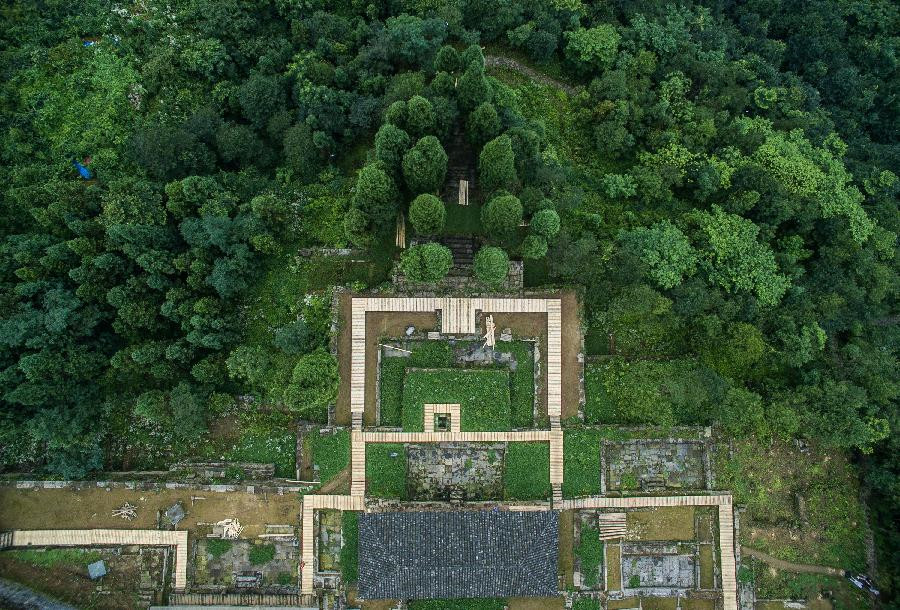China's major archaeological finds in last five years (part 2)
 |
|
An aerial view of Hailongtun Fortress in Zunyi, Guizhou province. [File photo/Xinhua] |
Hailongtun Fortress Site in Zunyi, Guizhou province
Located on Longyan Mountain, about 30 kilometers north of the old city of Zunyi in Southwest China's Guizhou province, Hailongtun Fortress Site is the best well-preserved medieval castle ruins in China.
The Hailongtun fortress was constructed by the Bozhou Tusi government in 257 during the Southern Song Dynasty (1127-1279) and destroyed during the war against Ming Dynasty rule in 1600.
The fortress consisted of nine passes and covers an area of two square kilometers. It was surrounded by cliffs on all four sides with only one entrance from the mountain road.
The term Tusi refers to local minority chieftains during Song, Yuan and Ming dynasties. For hundreds of years, imperial officials governed remote areas and borderlands via such hereditary leaders.
Hailongtun fortress provided important clues to study the development of Tusi System and the architecture featuring unique characteristics.
Hailongtun Fortress Site in Zuiyi of Guizhou province was listed as one of China's top 10 archaeological discoveries in 2012, and together with the other two Tusi sites, it was added to UNESCO's World Heritage List in 2015.









